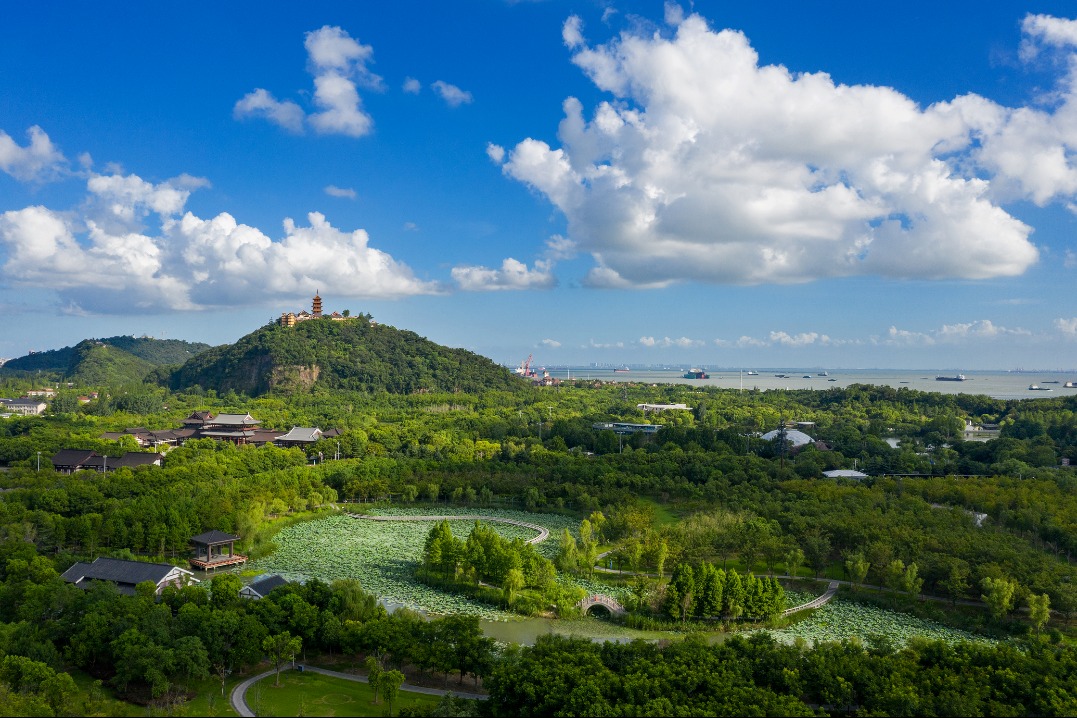All eyes on the weather to ensure successful National Winter Games
By Li Hongyang in Zalantun, Inner Mongolia | China Daily | Updated: 2024-02-19 09:26

Precise, timely forecasts are expected to play crucial roles during the ongoing 14th National Winter Games that kicked off in the Inner Mongolia autonomous region on Saturday, and meteorologists are working to ensure the accuracy of their weather reports.
Zhang Jiaxing, a meteorological engineer at the weather station in Zalantun in Hulunbuir, the host city for the games, said the main challenge is ensuring that all 15 automated stations in the area are operating correctly.
Situated at higher altitudes, the stations at the main skiing area are more difficult to maintain because of the lower temperatures and heavy snowfall, he said.
"Monitoring solar panels to ensure power supply and maintaining the signal transmission of meteorological equipment are critical tasks," he said. "I need to remove frost from equipment, and if it's going to snow, I need to spread a snow-melting agent in advance.
"Regular inspections, especially during snowfall, are essential to guarantee timely and accurate data transmission."
The Zalantun competition area will host seven events during the games, including freestyle skiing, half-pipe and cross-country skiing.
Temperatures that are either too cold or warm can have an impact on athletes' performance and safety. Varying levels of snowfall and visibility can also affect competitions and venues.
Successful coordination of meteorological services will play a crucial role, said Lian Yongping, a member of the games' organizing committee.
Accurate weather forecasts will allow the committee to make timely adjustments, contributing to the success of events, he said.
In early January, during a meeting of team leaders and coaches, the meteorological service team provided a detailed weather report for the following day. The organizing committee used the information to adjust the schedule for public training and qualifying competitions.
The meteorological service used WeChat apps and printed reports to provide weather updates three times a day during the qualifying rounds.
"For skiing events, factors including wind speed and snow temperatures are of utmost importance," Lian said.
Inner Mongolia's meteorological service said winter sports heavily rely on climatic conditions, with snow events being more dependent on weather support than ice-based sports.
Competition venues must strike a balance — not too cold, which could hinder athletic performance and increase the risk of injury, and not too warm, which could result in a soft snow surface, increasing the likelihood of errors.
Various factors, such as the quantity and quality of snowfall, can have distinct effects on the competition and the condition of the venue.
Excessive wind speed and low visibility can also have adverse impacts on the technical performance of athletes.
With an average temperature of -14.7 C, Zalantun has ideal conditions for winter sports. Located on the southeastern side of the Greater Hinggan Mountains, the region is shielded from cold air masses from the north and has higher temperatures than nearby areas.
However, forecasting in Zalantun presents challenges due to the competition zone being located on the leeward slope of the mountains, resulting in a more complex valley wind circulation. Predicting gusts is difficult, the region's meteorological service said.
During training, forecasters had to combine mountain meteorological theory and local weather rules to enhance their capabilities, it said.
























